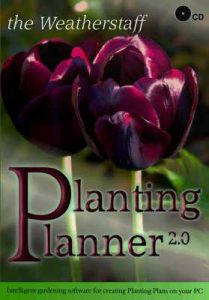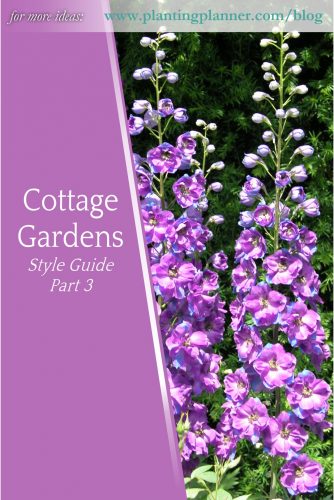from The Weatherstaff PlantingPlanner – intelligent garden design software
If you love charm over elegance, profusion over minimalism, natural haphazardness over control and order, the chances are that you love the cottage garden style.
Vertical Accents
By their very nature, cottage gardens are charmingly informal and unstructured. A sea of colourful flowers all swaying at the same height could end up lacking interest and a focal point, but, fortunately, several of the classic cottage garden plants naturally provide striking architectural structure, in the form of tall spires of flowers.
Hollyhocks, delphiniums and foxgloves all create vertical accents amongst low-growing flowers.
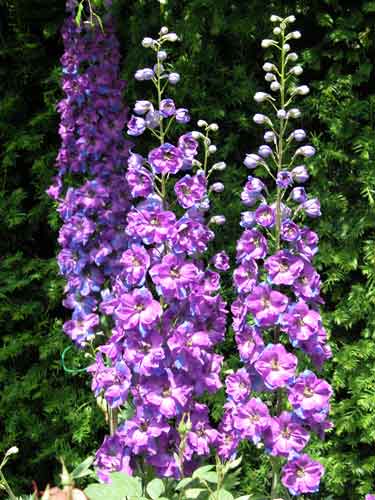
Delphiniums are stately perennials in ravishing shades of blues, pinks and mauves, as well as white. They are a bit demanding, as they like sun, a rich soil and a sheltered spot. They also need staking as their flower spikes are top heavy and will topple without support. But they are beautiful, seductively enchanting plants so well worth the extra effort. Flowers can be single, semi-double or double, with inner sepals forming an eye (or bee) in the centre of each.
Hollyhocks (Alcea rosea) also need fertile soil, a sunny spot and supporting with strong stakes. If you like dark and sultry, look out for Alcea rosea ‘Nigra’, which has stunning near-black single flowers. They are biennials or short-lived perennials, but will usually self-seed obligingly to give you more plants in their place.
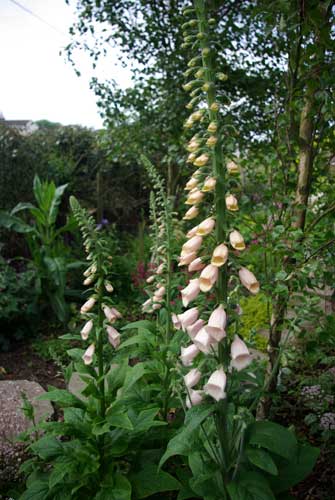
The foxglove is a stunning architectural plant, with flower spikes up to 5 or 6 feet tall. Foxgloves are biennials or short-lived perennials, but will self-seed readily to maintain and multiply your collection each year.
Digitalis x mertonensis is a semi-evergreen perennial, with dusky strawberry flowers from late spring to mid-summer. ‘Apricot Beauty’ has spikes of apricot flowers from early to mid-summer. Digitalis is a magnet for bees and other insects, the markings on the inside of the flower guiding them towards the nectar.
Two other plants I couldn’t bear to be without are Thalictrum (Meadow Rue) and Verbena bonariensis. Both are tall, but light and airy. Despite their height, they can be used towards the front of a border as they will not screen the planting behind.
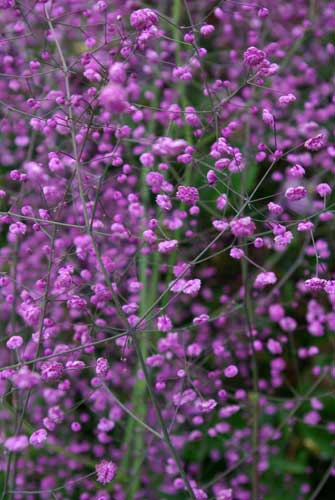
Thalictrum delavayi ‘Hewitt’s Double’ has mounds of delicate blue-green, aquilegia-like foliage. Tall stems carry sprays of tiny, pompom-like, deep mauve flowers from mid-summer to autumn, creating a wonderful hazy display for weeks.
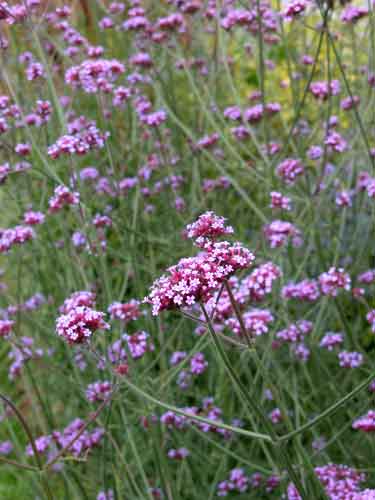
The wiry stems of Verbena bonariensis are topped with dancing clusters of tiny lavender-pink flowers. The flowers appear from mid-summer to early autumn, while the seedheads can be left through the winter.
Structure
Cottage gardens are a delight in the summer months, but you will be living with it all year round. It is worth considering how you can create structure and interest in the garden when the spring and summer flowers have died back.
The most obvious way is to think about incorporating features such as obelisks, pergolas, picket fences and arches. Trees and shrubs also extend the season of interest in your garden, providing a ‘backbone’ and winter interest to the garden.

Escallonias are attractive, compact shrubs, grown for their summer blossoms and evergreen foliage. Escallonia ‘Red Elf’ has a profusion of crimson flowers. ‘Apple Blossom’ flowers are delicate white-centred pink.
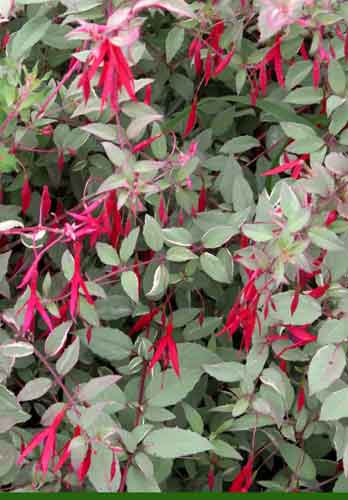
Fuchsia magellanica var. gracilis is an upright, deciduous shrub. Throughout the summer and into autumn, little drooping, dancing flowers are produced in abundance. Red-purple berries appear in autumn.
Roses are a must, of course, with their exquisite charm and delicate, often fragrant, flowers.
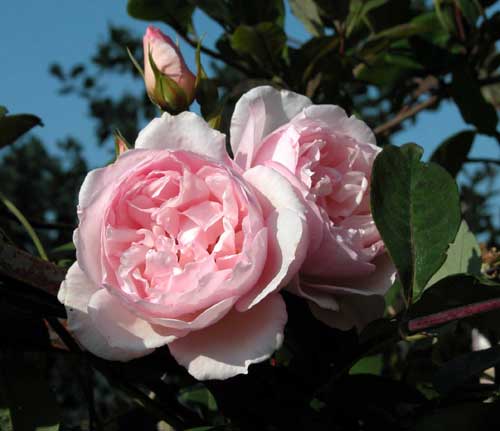
Rosa ‘The Generous Gardener ‘ is from David Austin’s collection of English Roses, which combine Old Rose flower shape and fragrance, with the Modern Rose’s repeat-flowering and wide colour range.
Stunningly beautiful and exquisitely scented, double flowers of very pale pink are carried throughout the summer and autumn, amongst glossy, dark green foliage. ‘The Generous Gardener’ can be grown as a climber or rounded shrub, with arching stems. It is highly disease-resistant.
Other old-fashioned flowering shrubs include lilacs, for their gorgeous scent, and hydrangeas – the delicately pretty flowerheads can be left on the plant over winter to extend the season of interest in the garden.
Need a Cottage Garden Planting Plan?
The Weatherstaff PlantingPlanner makes it easy for you to create a cottage garden style border.
The interactive gardening software designs all-season planting plans, tailored to your garden’s soil and light conditions.
Select ‘Cottage Garden’ for your choice of style and pick your preferred colour scheme. Enter your garden’s climate, soil and light conditions. The PlantingPlanner will draw up a planting plan with flowers, herbs and shrubs, which are perfect for creating your very own cottage garden.
You can tweak and modify your generated plan, by excluding any plants you don’t like and substituting them with your favourites. The PlantingPlanner will tell you if your choices are suitable for your location.
If you want to grow vegetables as well as ornamental plants, you could use a collection of pots and containers to cram into gaps around your garden. Try
here for inspiration.
Pin for later
For more gardening ideas, click here to follow the Weatherstaff PlantingPlanner on Pinterest.


